A conservatory can create the extra living space you crave, provide a seamless transition from inside the home to your garden or become a year-round sanctuary.
It is also a significant purchase, so you don’t want to get it wrong.
Don’t worry. We’ve compiled this quick guide on how to choose a conservatory and a few tips on what to look for. We’ve also answered some of your most frequently asked questions to help you find the best fit.
Conservatory Sizes
We’ll start with size. Conservatories come in various sizes to suit different homes and budgets.
However, choosing a conservatory that is too small is a common problem.
Although a smaller conservatory can be cheaper initially, too small, and you will likely use it less. It can then become an expensive junk room.
First, consider the space you have available and the location of the building.
Factor in the effect, if any, building a conservatory will have on your neighbours.
Next, consider the proposed function of the conservatory – is it a playroom? A second living room? An extension to the garden? This will help determine what size is best.
Finally, look at your existing furniture to see what will fit your designated space and how it will work for you. This should help you decide which size conservatory will best suit your requirements.
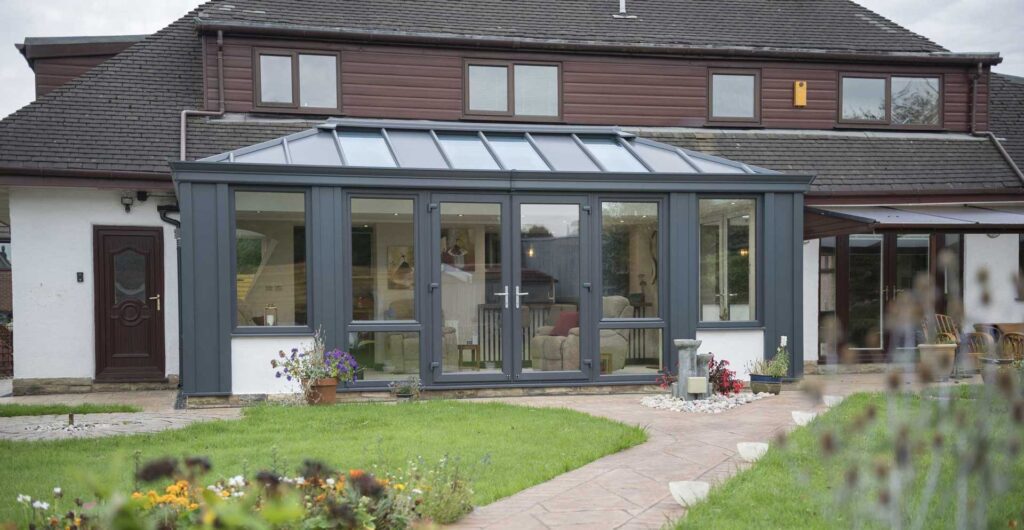

Conservatory Styles

Lean-to Conservatory
- One of the most popular and cost-effective conservatories and extension options.
- Connected to the rear of your property by an existing wall and adding a glass, tiled, or polycarbonate roof.
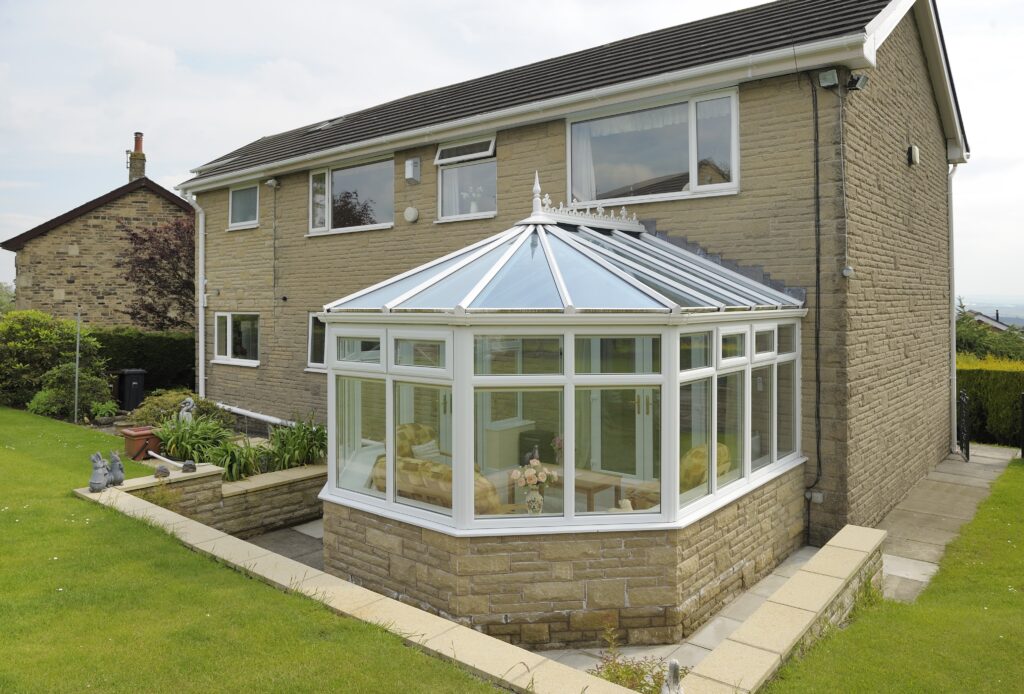
Victorian Conservatory
- Features a traditional design with an attractive bay front and pitched roof.
- Floods the space with lots of lovely natural light.
- Customisable with decorative finials and cresting to match the look of neighbouring properties.
- Perfect for a period property.
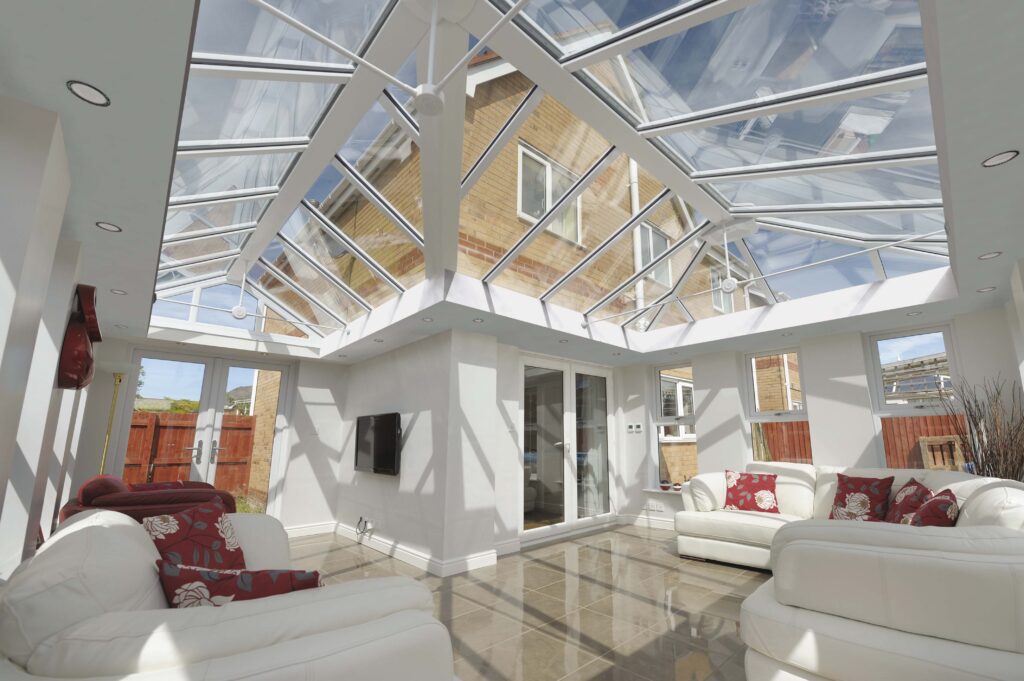
L Shaped Conservatory
- Also known as a corner infill conservatory.
- Makes excellent use of an existing space, such as the gap left by an extension or garage.
- Creates usable living space and potentially adds value to your property.
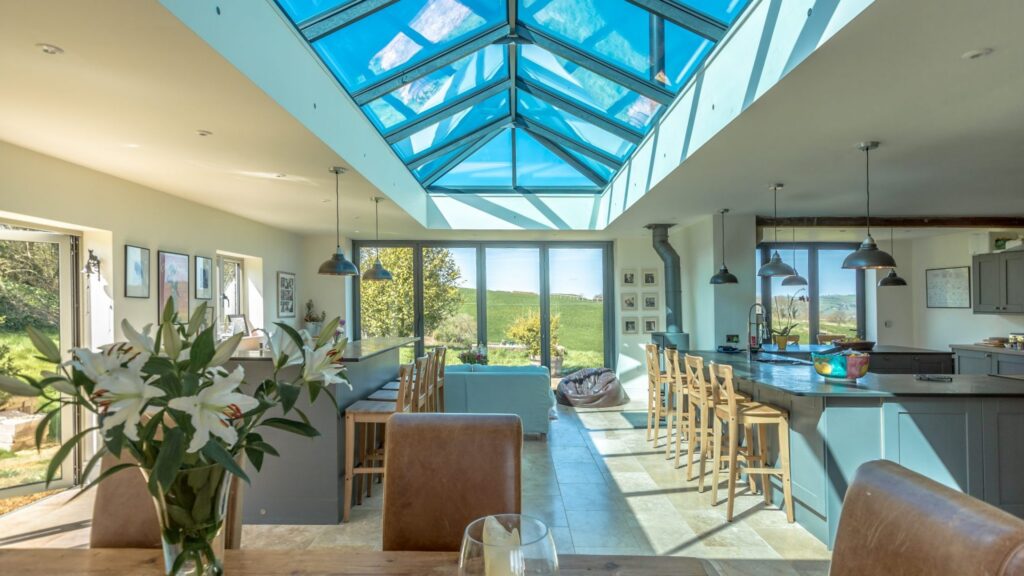
T-Shaped Conservatory
- Forms a T-shape with three front-facing sides and a central projection into your garden or yard.
- This is a larger style of conservatory, so it is best suited to big outdoor spaces.
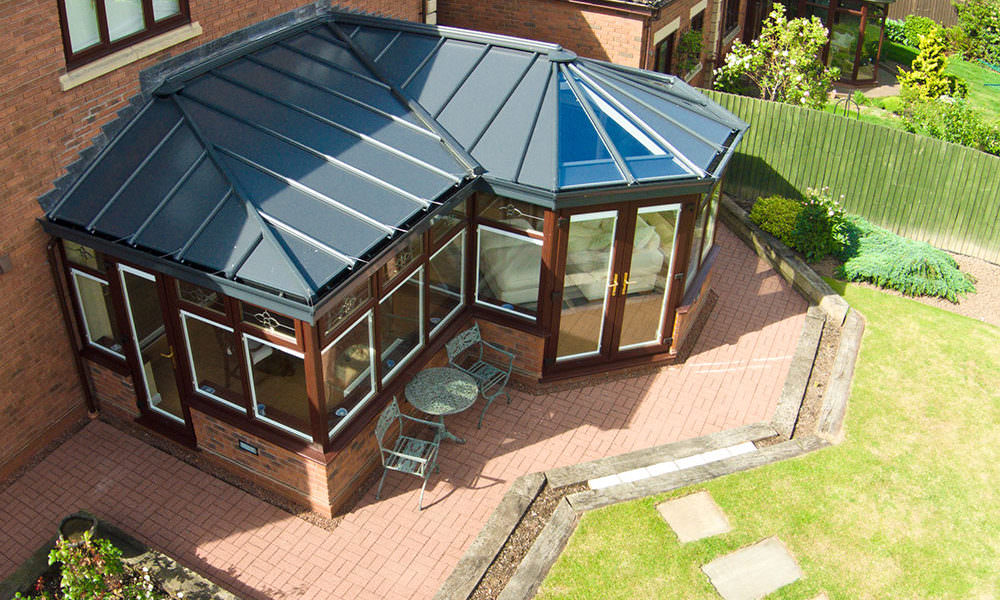
P- Shaped Conservatory
- Perfect for larger properties and detached homes
- A lean-to and Victorian hybrid, with three or five sides, depending on the size of your home.
- You can choose from a glass, polycarbonate or tiled roof.
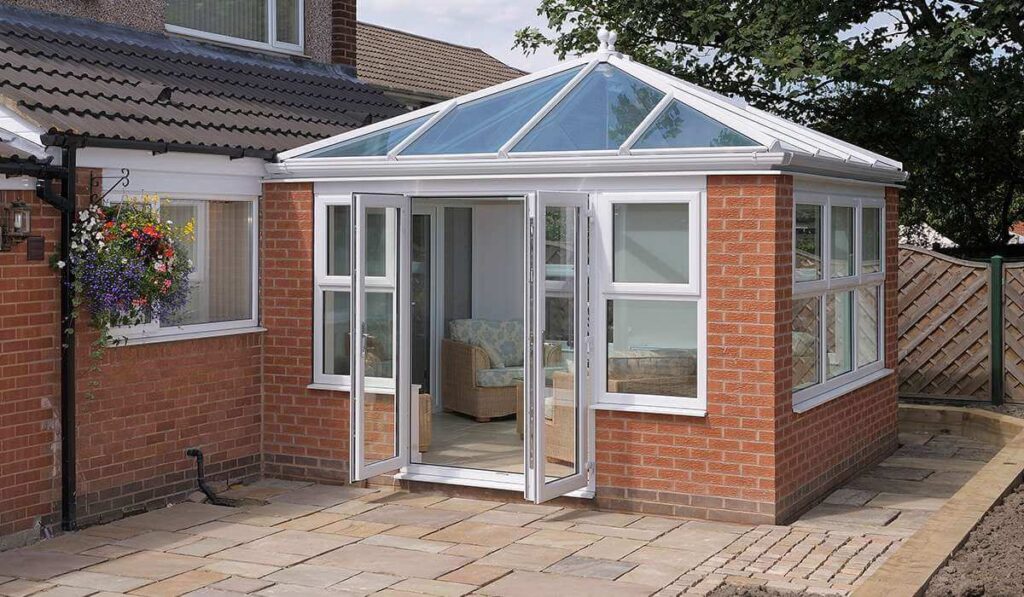
Edwardian Conservatory
- Perhaps the most elegant design.
- Typically square or rectangular, offering maximum floor space.
- With large glass panels and clean lines, they are bright and airy rooms with plenty of natural light.
- Suitable for modern or period properties.
- Due to the simple shape, you can have a glass or polycarbonate roof, a tiled roof, or a hybrid customised to your specifications.
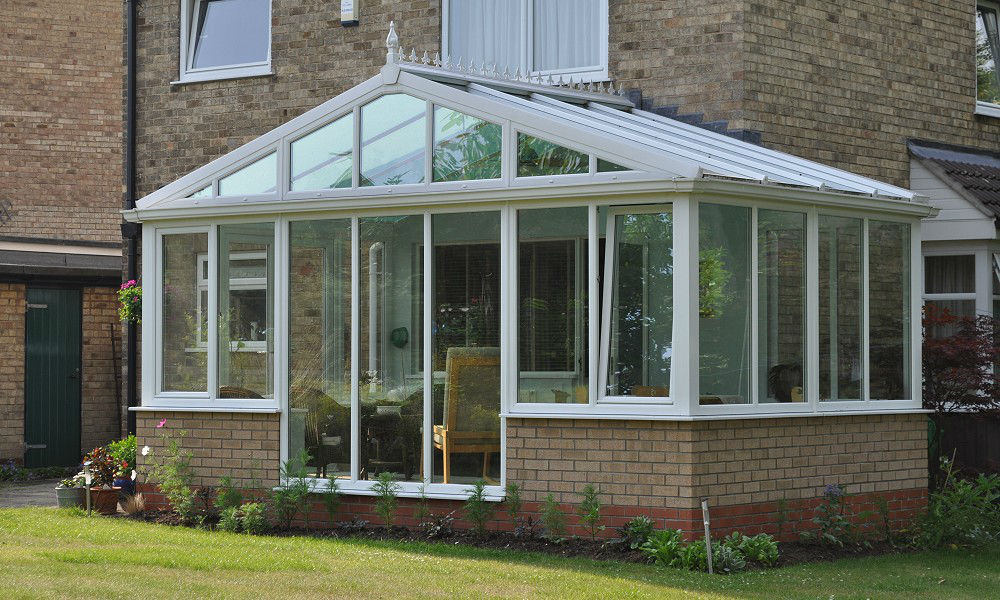
Gable-End Conservatory
- Blends beautifully with period homes.
- With an upright roof similar to a house, the gable-end style offers extra height and an old-orangery-style grandeur.
These are just the most popular basic shapes. You can also work with our expert team to create the bespoke conservatory of your dreams.
Conservatory Materials
Conservatories are primarily available in the following three materials:
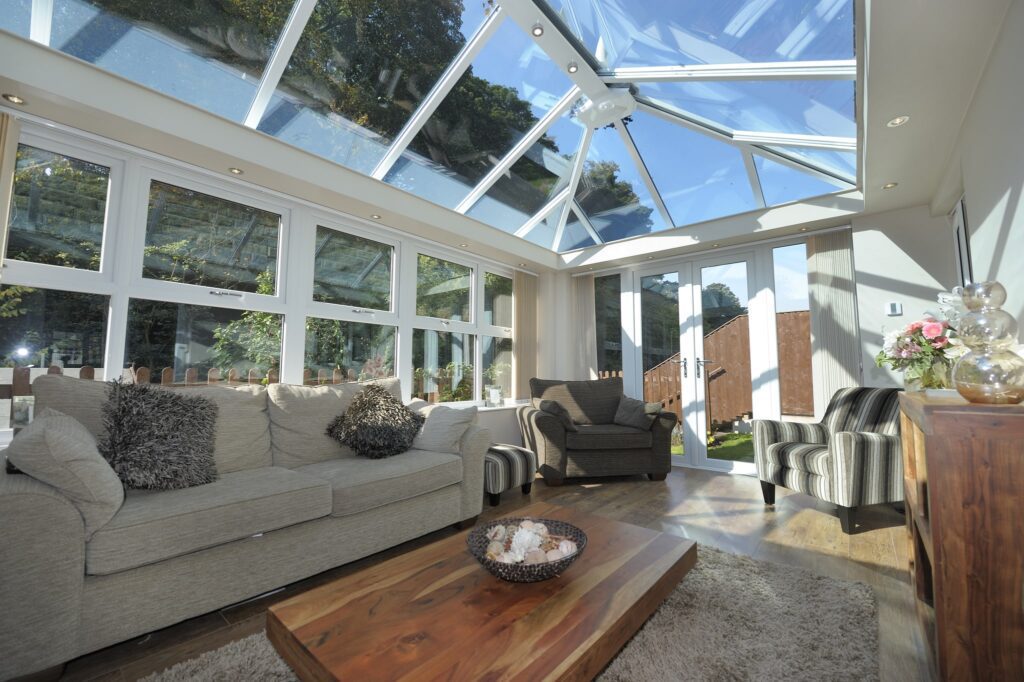
uPVC Conservatories – Low maintenance and cost-effective; available in several colours and styles.
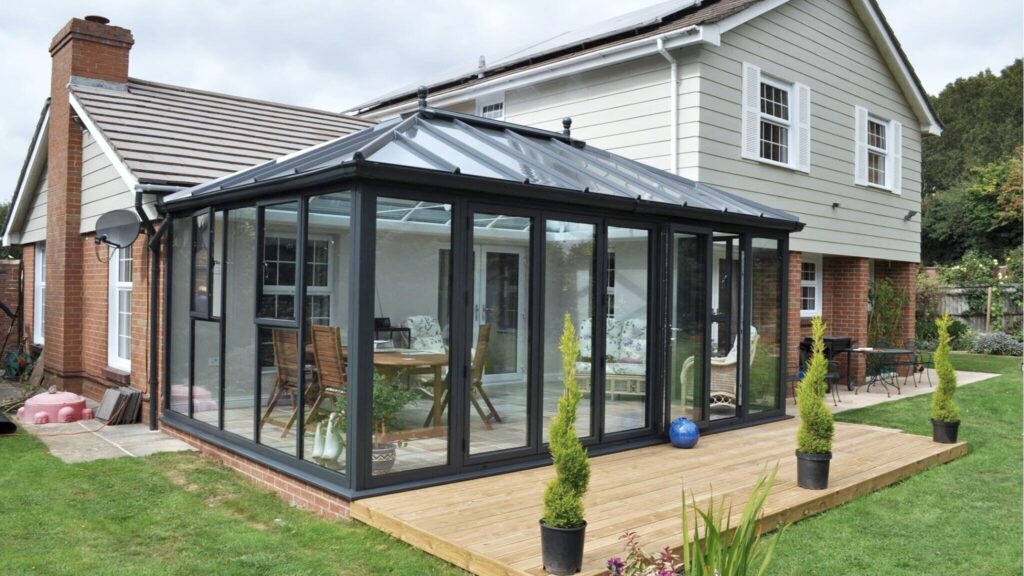
Aluminium Conservatories – Sleek, modern look; strong yet lightweight with excellent thermal performance.

Hardwood Conservatories – Classic appearance; great for period properties and high-end aesthetics.
Conservatory Doors
The four main types of doors for conservatories are:

Bi-Fold
Contemporary full-width openings that slide back on themselves to maximise space.

Single Doors
A practical option for tighter spaces or where a simpler access solution is needed.
We offer an attractive selection of internal and external doors suitable for your conservatory and home.

Let’s Talk About Conservatory Roofs
Whether you buy new or upgrade your existing conservatory, the roof is pivotal.
There are three main types of conservatory roofs:

Glass
Allows lots of natural light, and an indoor/outdoor feel, but temperature control; can be difficult.

Polycarbonate
Enables natural light to flow, more affordable than glass, but insulation can be a problem.
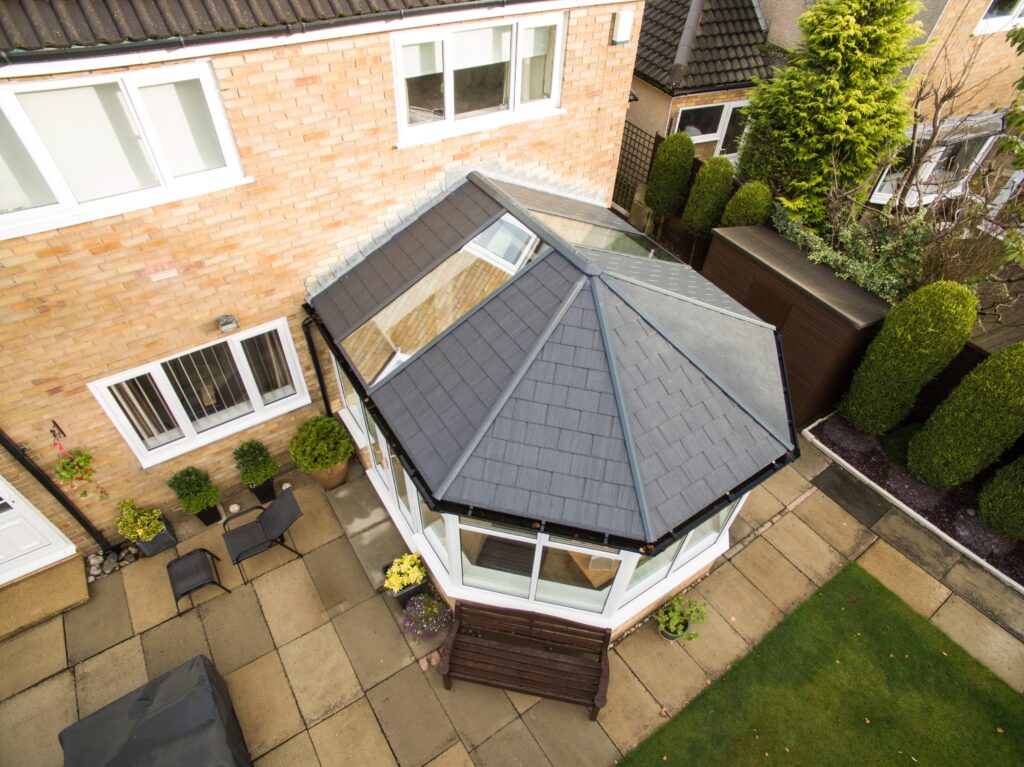
Solid/Tiled
Typically slate composite or steel, available in several colours, improves ventilation and limits solar glare.
Hybrid roofs, which incorporate solar panels and intelligent technology to maximise your conservatory’s energy efficiency, insulation and aesthetics, are growing in popularity.
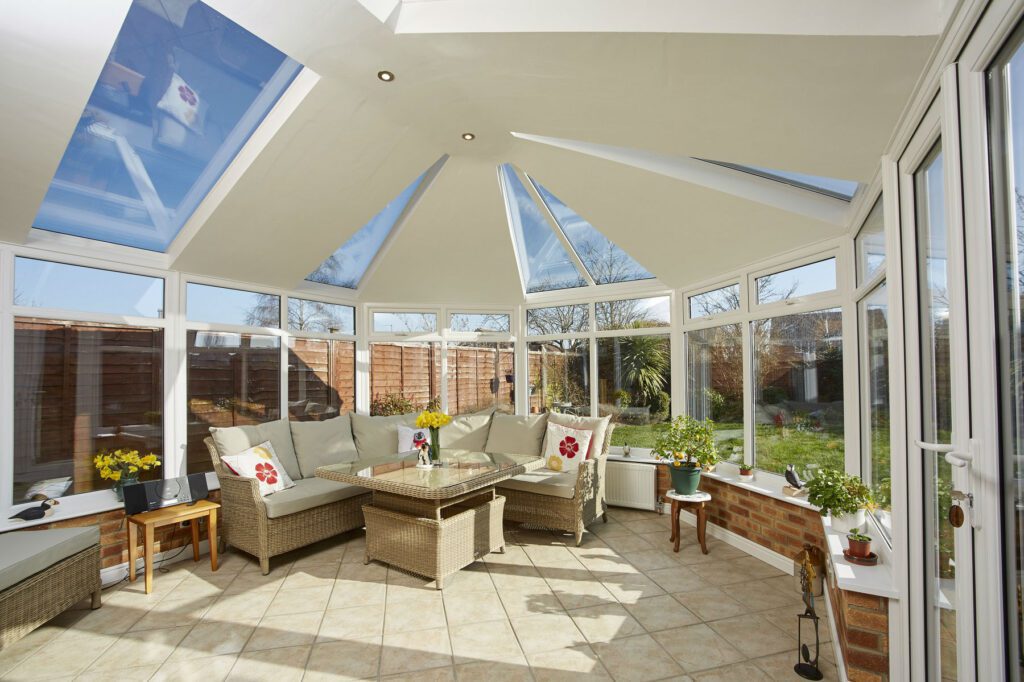
How warm are modern conservatories?
Modern conservatories such as ours offer excellent temperature control, keeping you warm in the winter and cool in the summer. This means they can be used all year round.
While glass and polycarbonate are not the best insulators, contemporary conservatories incorporate modern technology to ensure maximum insulation without compromising airflow.
Energy-efficient glazing, such as Planitherm, thermally broken frames and insulated roof options have improved insulation, temperature control and UV penetration to create a comfortable space, whatever the weather.
5 Tips When Buying A Conservatory
- Think about the space & natural light – Where will it sit? Will it block or enhance light? What time of day will it get the most light?
- Choose a style that complements your home – Match architecture and window lines of your property and those in the area.
- Set a realistic budget – Factor in materials, installation, glazing, electrics, heating and furnishings.
- Get your home valued before installation – You need to know your ceiling price and current valuation to understand how it might affect resale.
- Check for planning permission – Contact your local authority to determine whether planning permission is required.
How to Get in Touch
To request a free brochure, you can call us on 0161 976 4739, use our contact form or chat with us via the chat button at the bottom right of this website. If you live locally, you can also visit our Altrincham showroom, and check our contacts page for up-to-date opening hours.
We look forward to hearing from you!
FAQs
The average price for a fully fitted UK conservatory in 2025 is between £15,000 and £25,000. However, the size, shape, materials used, location, type of roof and style of a conservatory will all affect the cost. For example, a small, prefab lean-to could be less than £10,000 all in, whereas a large wooden conservatory with a complex design could cost up to £100,000.
Any reputable glazing company will offer you at least a ten-year guarantee on a new conservatory. Any less than that, and you should go elsewhere.
A uPVC conservatory from Manchester Window Factory lasts around 25 years due to expert installation and modern materials.
A hardwood or aluminium frame conservatory can last significantly longer if the former has the proper care and attention.
Historically, many conservatories were too hot in the summer and too cold in the winter. Modern technologies have vastly improved, but if you are still having problems, it could be one of these issues.
The roof – Old-style conservatories often featured entirely glass roofs, usually single-glazed. If your conservatory is cold, think about a replacement. Polycarbonate roofs can help you to regulate the temperature of the room. Alternatively, you can replace the glass with thermally-efficient glazing.
Poor insulation – Your walls, windows, doors and conservatory ceiling/roof should be insulated.
Ventilation – Improve airflow by adding vents into your windows and roof to stop draughts and condensation.
Single-glazing – If your conservatory still has single-glazing, heat will likely escape, creating a cold environment. You can upgrade your conservatory to double or even triple-glazing to solve this problem.
If your conservatory is still cold, install under-floor heating or a hung or free-standing radiator.
The direction of your conservatory can also affect the temperature, with south-facing conservatories getting the most sun. If your conservatory faces north, you may want to invest in thermally-efficient glass.
Most blinds are best suited to a uPVC conservatory, so a timber or aluminium frame may offer fewer options. The shape of glazing, moisture in the air and heat retention can also be factors. Even with a uPVC conservatory, traditional blinds may not be the best fit.
Traditional blinds can fade with sun damage, the pulleys can be dangerous for pets and small children, and it can be difficult to get them to fit unusually shaped or sized windows.
Internal blinds offer a solution to all these issues and more by being integrated into the glass.
As the climate crisis continues and temperatures rise to record highs in the UK, climate groups have warned that there is a risk of homes overheating due to the size of the windows in conservatories and patio doors. Regulations introduced last summer look to limit heavily glazed buildings connected to the main property and heated.
This means you should think carefully about how and where you build your conservatory, the materials used and their energy efficiency rating.
New materials and technology have made modern conservatories far more energy efficient.
There has also been a move towards harnessing solar power and using recyclable materials such as aluminium and sustainably sourced timber.
All our windows, doors and conservatories come with A ratings, so you have the peace of mind of energy-efficient products.
You do not usually need planning permission for a conservatory. However, there are some exceptions, which we have outlined in an updated blog, linked above.
Typically, as long as you adhere to updated building regulations, conservatories are covered by permitted development rights.
An attractive, energy efficient conservatory that blends in with the architecture in the area and matches your property can absolutely add value to your home.
However, it must tick all the above boxes, and it must be installed correctly.
A poorly installed conservatory will not be energy efficient and can leak, causing heat loss and potential water damage.
Remember to check if your home has hit its ceiling price before investing in any home improvements or developments, such as a conservatory.
There are a couple of differences between a conservatory and an orangery which we will explore more fully in an upcoming blog.
In a nutshell, a conservatory is typically mostly glass, whereas an orangery may have brick or stone walls with glazing incorporated as windows, more like a house. There may also be differences in the roof and the primary function of the spaces.
The average time to build a conservatory is three to six weeks. However, many things can affect the timescale, including:
- The weather
- How simple or complex the design is
- Accessibility to the site
- Condition of the site
- Planning permission/building regulations
- Availability of labour in the location
- Hiring a professional fitter v DIY
Generally, a South-facing conservatory is considered the best choice due to maximum sun exposure for warmth and natural light. However, this can also cause overheating in the hottest months, so ventilation solutions must be effective.
If you wish to enjoy the sunrise, an east-facing conservatory captures the morning sun best, while night owls might prefer the late afternoon/evening sunshine of a west-facing conservatory.
That is the goal. Most people want maximum use out of their conservatory to get the best return on investment.
If your conservatory has been correctly installed, with excellent insulation and ventilation, there is no reason why it cannot become a year-round space.
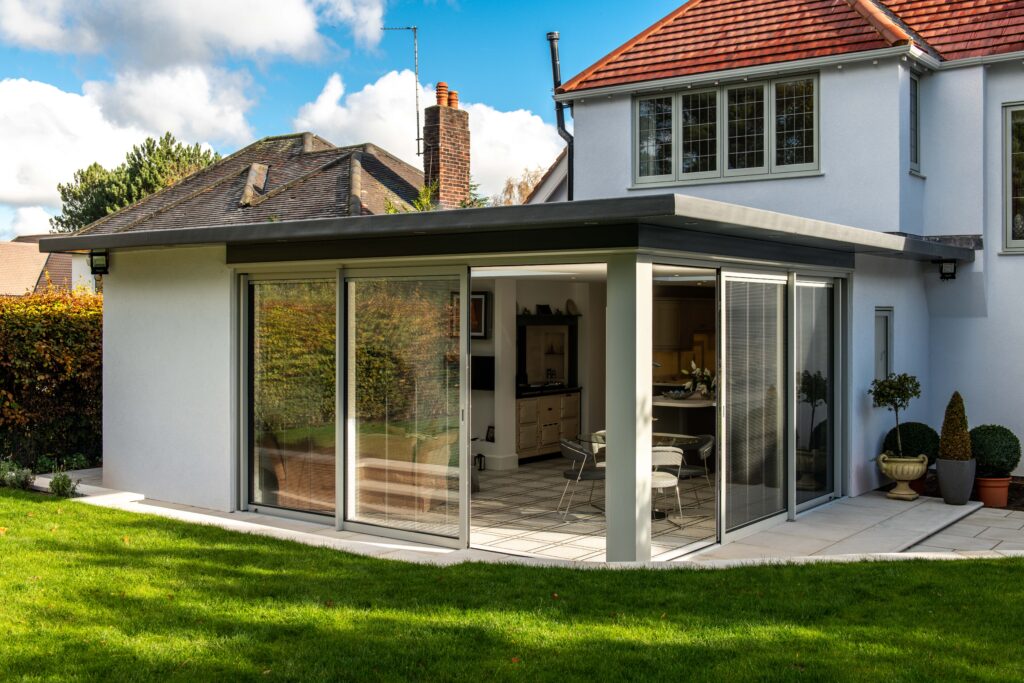
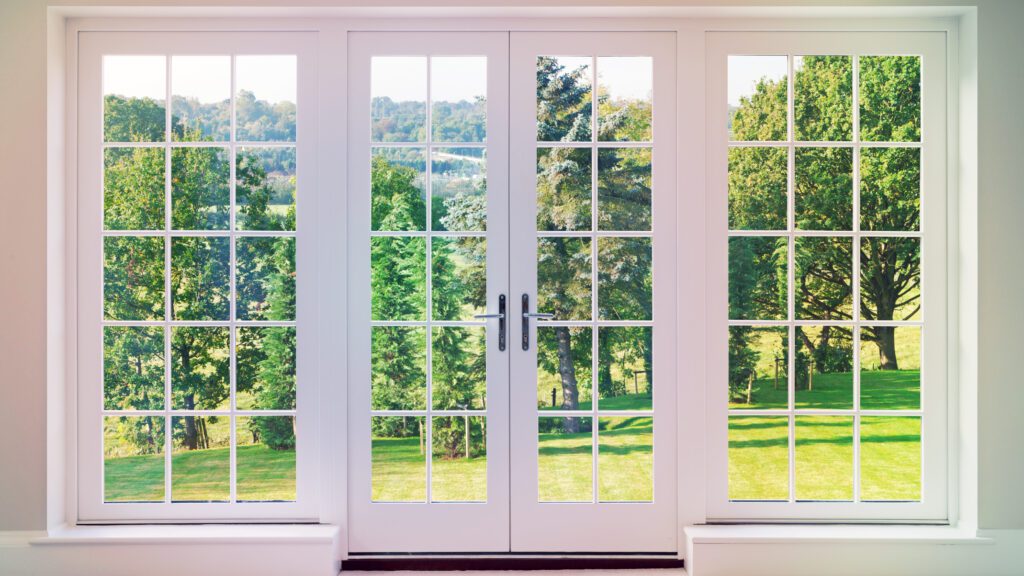





 by
by